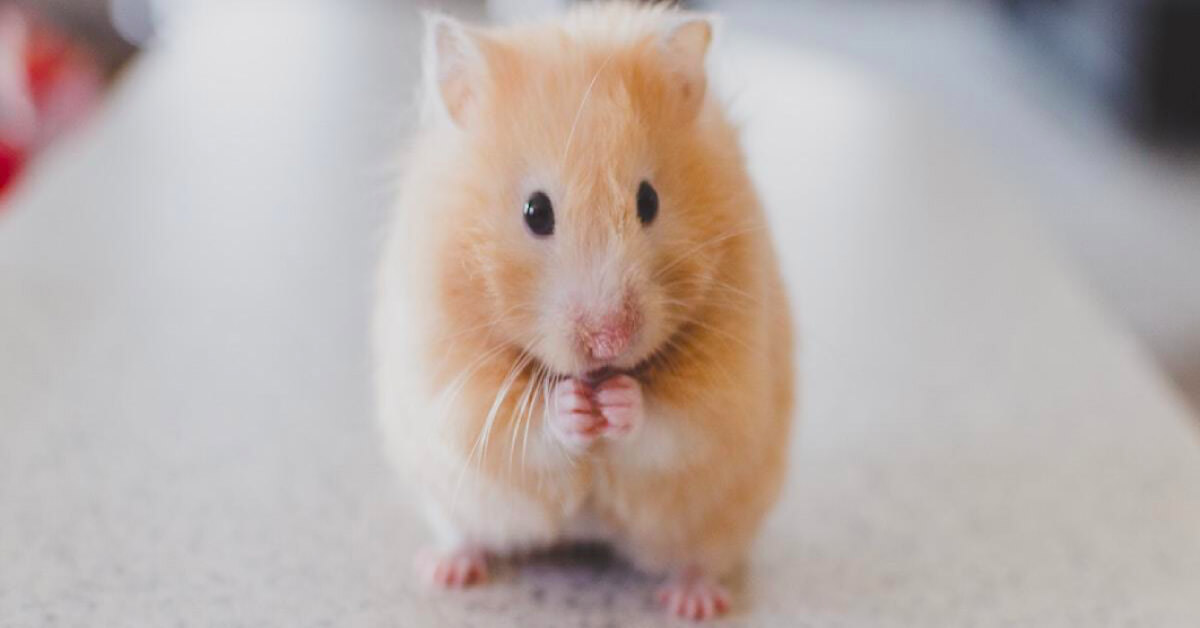5 Facts You Never Knew About Caring For Hamsters

Put a hamster in a room and you’ll get a resounding series of “aww”s. Sure, these furry little critters are cute, but contrary to popular belief, they are not that easy to care for. In fact, hamsters are not recommended for young children and should not be “starter pets” because of the amount of delicate care they need!
Here are some other mind-blowing facts about these adorable fuzzballs that you should be aware of before you decide to care for one:
Hamsters Grow Teeth Continuously

Surprise! Unlike human beings who usually have two sets of teeth during their lifetimes, your hamster’s teeth grow constantly. This affects your hamster’s dietary needs.
For example, your hamster will require constant access to hay. By grazing on hay, it grinds its teeth down, plus the hay provides the necessary fibre it requires for digestive motility. Another healthier option is to provide crunchy vegetables to control the growth of your hamster’s teeth. Give your furry friend vegetables a few times a week and vary the vegetables given to ensure variety. For starters, you can give your hamster cucumbers, carrots, and broccoli.
Your hamster should also have access to plenty of wood and chew toys — remember to only get wood from pet stores to ensure that they are properly sanitised and free from mites and bugs!
Hamsters Can Escape Their Cages

If you think that a plastic cage is enough to keep your beloved hamster safe and sound, think again.
Given that we have established that your hamster has constantly-growing teeth that you have to keep in check, having a plastic cage might give your hamster a chance to chew its way to escape.
Moreover, given your hamster’s relatively small size, it can wiggle its way out of its cage if left unchecked and get hurt in your house without you knowing. To prevent your hamster from escaping and going missing, be sure to have an escape-proof cage with bars that are located very close to each other. It is better to get a metal cage instead of a plastic one as well.
Hamsters Can Get Injured Easily

Your hamster has to be kept safe in its cage because of the dangers that await outside the cage. These include other pets that are bigger in size or with innate hunting instincts such as cats, and poisonous substances that could be lying around — think exposed paint cans, glue, and more.
If you are letting your hamster roam around outside its cage, inform everyone in your household first. Tread around watchfully, open and close doors and folding chairs carefully, and avoid putting your hamster in places with holes that it could fall into. Keep in mind that hamsters have the ability to flatten their bodies, making them able to fit through very small holes and crevices!
To be safe, let your hamster roam about freely in a hamster ball under supervision, for no longer than 20 – 30 minutes. Alternatively, consider placing your hamster in an exercise playpen for hamsters.
Beware of the Exercise Wheel

The exercise wheel is a necessary tool to keep your hamster active in its cage. That being said, some exercise wheels can lead to your hamster injuring itself. For instance, if your exercise wheel is too small, your hamster will be forced to bend its back unnaturally. Moreover, your hamster can get caught in the rungs of the wheel and injure itself.
Having said that, your hamster still can have its exercise wheel — you just have to get a safe one that should be large enough for your hamster to run without having to arch its back, as well as a flat surface without rungs.
Not All Hamsters Can Be Caged Together

Before you find a hamster friend, we recommend reading up on the different species available because they each have their own dispositions and may or may not be suitable for co-existing in the same cage.
Generally, the most common ones are the Golden or Syrian hamsters and Dwarf hamsters. While the former is solitary by nature and cannot be caged with another hamster after it turns 10 weeks old, the latter can learn to co-exist with other hamsters if they are socialised at an early age.
It is also best to have only one gender if you wish to have multiple hamsters, otherwise, you’ll find yourself with many hamster babies








